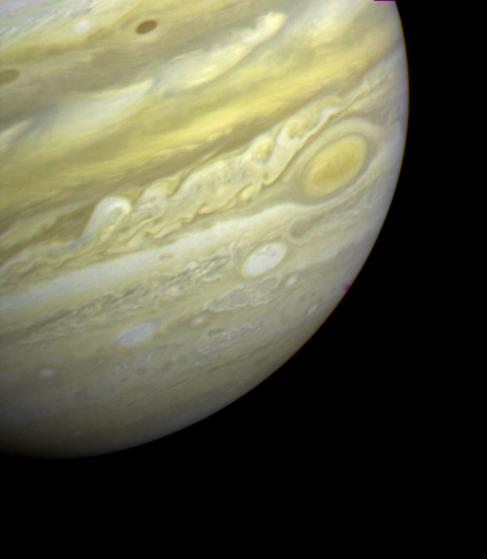[/caption]
The Solar System holds some big records. Want to know which are the largest in the Solar System?
Largest star
Well, there’s only one star in the Solar System: the Sun, so it’s the automatic winner here. The Sun measures 1.4 million km across. That’s so big, you could put 109 Earths side by side to match the size of the Sun. Astronomers have theorized that the Sun might have a companion star on a long orbit, but if was anywhere as large or bright as the Sun, we’d definitely see it. So this is a record that won’t fall.
Largest Planet
The largest planet in the Solar System is Jupiter, which measures 143,000 km across its equator. That’s the same as 11 Earths. In fact, Jupiter is so large that it has 2.5 times the mass of all the other planets in the Solar System… combined. One interesting note is the Jupiter actually can’t get any bigger. If you added more mass to Jupiter, the increased gravity would actually pull it together harder, and it would shrink.
Largest Moon
The largest moon in the Solar System is Jupiter’s moon Ganymede, which measures 5,268 km across. It’s actually larger than Mercury, as well as Pluto and the dwarf planets. If it orbited the Sun, it might be a planet in its own right. Astronomers used to think that Saturn’s moon Titan was the largest moon, but then they realized that Titan’s thick atmosphere made it just appear larger.
Largest Mountain
The largest mountain in the Solar System is Olympus Mons on Mars. This ancient shield volcano measures 27 km tall. That makes it 3 times the elevation of Mount Everest on Earth, and 2.6 times the height of Mauna Kea from its base below the ocean. Astronomers think that Olympus Mons got so big because Mars never developed plate tectonics. A hotspot opened up to the surface of Mars, and just stayed there for billions of years, pouring out lava and building up the mountain. Olympus Mons is also the largest volcano in the Solar System.
Largest Asteroid
The largest object in the asteroid belt is Ceres, measuring 974 km across. But there’s a problem, Ceres has been upgraded to the status of a dwarf planet, like Pluto. This means that the largest actual asteroid is Vesta, also located in the asteroid belt. Vesta measures 530 km across, and contains about 9% of the mass of the asteroid belt.
Largest Crater
The largest crater in the Solar System is on the Moon. It’s called the South Pole-Aitken Basin, and measures about 2,500 km across. Astronomers on Earth didn’t realize it was a huge crater until the first spacecraft orbited the Moon. That’s because we can’t see the crater itself from our vantage point, just a huge rim of mountains. South Pole-Aitken Basin might actually be the second biggest crater in the Solar System. That’s because new research indicates that a much larger impact site might be on Mars, called the Borealis Basin – measuring 8,500 km across, but more proof needs to be gathered.
Here’s an article about the largest planet, and the largest moon in the Solar System.
Here’s an article about that recent news on Borealis Basin.
We have recorded a whole series of podcasts about the Solar System at Astronomy Cast. Check them out here.
Reference:
NASA Solar System Exploration Guide
NASA SOHO: Our Star, The Sun
NASA: Moon’s Largest Impact Basin
NASA Photo Journal: Olympus Mons

